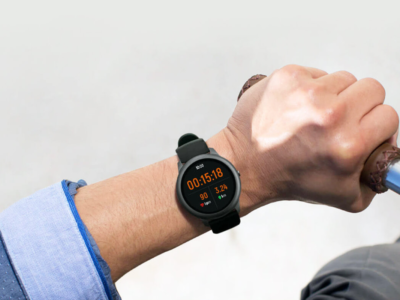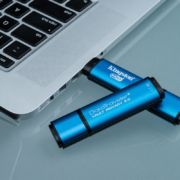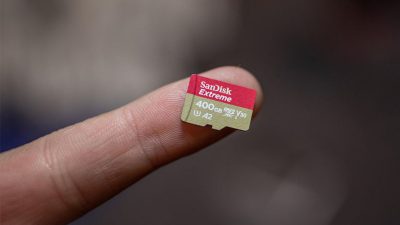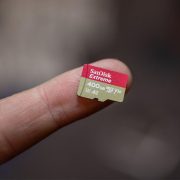We get it, your phone is important. You use it to catch up with friends, check in with work emails, and capture life’s precious memories. But to make calls, send text messages, or use mobile data, you will need to insert a SIM card in order to connect to your mobile network. The tiny piece of plastic slotted into the side of your device is crammed full with information that allows you to communicate with one another.
Are you wondering how a SIM card works? Then, look no further. We have put together a short guide which explains everything you need to know about SIM cards and answers the most commonly asked questions.
What is a SIM card?
A SIM card, otherwise known as a subscriber identity module, is a small piece of plastic that slots into your mobile phone to allow you to communicate with your mobile phone carrier.
In other terms, a SIM card is the middle point which connects your phone and network provider together. Essentially, this allows you to make calls, send SMS messages and connect to mobile internet services (such as 3G, 4G, 5G, etc.). As well as containing a mixture of information, they hold a unique ID, known as the International Mobile Subscriber Identity, which identifies your phone to the network. For example, the IMSI is used to connect another user that is phoning your mobile number to your specific phone, rather than to someone else’s.
When were SIM cards first introduced?
The first-ever SIM card was invented in 1991 by Giesecke & Devrient – a German-based smart card maker. The company sold the first 300 SIM cards to the Finnish wireless network operator, Radiolinja.
At the time of creation, Europe had adopted GSM (Global System for Mobile Communication) regulations. GSM is a digital mobile network that is used widely by mobile phone users in Europe and across the globe. Adopting GSM permitted users to connect to their chosen mobile network and make phone calls to users on other networks. Effectively, it was a turning point for mobile phones.
Now, the use of SIM cards allows a staggering 7 billion devices to connect to mobile networks, globally.
What are the different SIM formats?
There are three main SIM formats which are currently used within mobile phones. These include a Standard, Micro, and a Nano SIM. Listed below are the sizes for each SIM format:
- Standard SIM: 85mm x 53mm
- Micro SIM: 15mm x 12mm
- Nano SIM: 12.3mm x 8.8mm
In addition to the three main SIM card sizes, is the embedded SIM, or better known as the eSIM. Essentially, the eSIM is a reprogrammable chip that is integrated into the structure of the cellular device. It acts as a ‘universal’ SIM card which remains inside the device, whilst the information it holds can be updated or changed without the removal of the card. The eSIM is much smaller than the standard Nano SIM cards and is compatible with phones such as the Apple iPhone XS and Google Pixel 3.
- Embedded SIM (eSIM): 6mm x 5mm
Regardless of the different dimensions or the type of mobile phone you are using, all SIM cards hold the same kind of information within the small chip.
What size SIM card do I need for my device?
If you are unsure what size SIM card you need for your device, take a look at the user manual that came with the phone or the manufactures website which will give you information on what size/format SIM you require.
How do I remove or insert a SIM card?
The method to remove or insert a SIM card varies depending on your device. Despite what SIM card you have, it is important to turn the power off on your device before removing or inserting the SIM card.
Are you after general instructions for the installation or removal of a SIM card? We have highlighted a generic guide for each SIM card slot, via Verizon:
- SIM Card Tray: If your SIM card is located in a SIM card tray, push a sharp object like a paper clip or SIM eject tool into the circular opening on the SIM card tray. Then to insert, push the tray back into the slot.
- Under Back Cover: Remove the back cover and the battery. From here, you will be able to insert or remove the SIM card for the SIM slot.
- Side Port: Begin by opening the access cover which can be found on the side of your phone. To release, lightly push in on the SIM card to slide it out. Push the SIM card back into the slot to insert, and secure the latch.
Can I use my phone without a SIM card?
To put it simply, yes. Yet, there are limitations when using your phone without a SIM card.
If you only want to use your phone for tasks such as using Wi-Fi, listening to music or taking pictures with, then you don’t need a SIM card fitted. However, if you would like to use your phone as a cellular device then no, it won’t work without a SIM card. To connect to mobile internet services like 4G, receive or make calls, send text messages and even use apps like Whatsapp, you will need to insert a SIM card so you can connect to a mobile network.
How much memory does a SIM card have?
Although a SIM card is of a similar size to the high-capacity memory card you use in your camera or smartphone, the average SIM typically only holds a mere 32 to 128 kilobytes of data. But, that is enough to store important data like your contacts and subscriber information.
If you find you are lacking storage space on your Android phone, consider buying a microSD card to increase the internal storage capacity. If your phone is capable of expandable memory, inserting a Micro SD will allow you to take more photos, save content, transfer files faster and even store apps. Just make sure your phone supports Micro SD cards first, you can do this by searching for your phone in our Device Finder.

























Comments